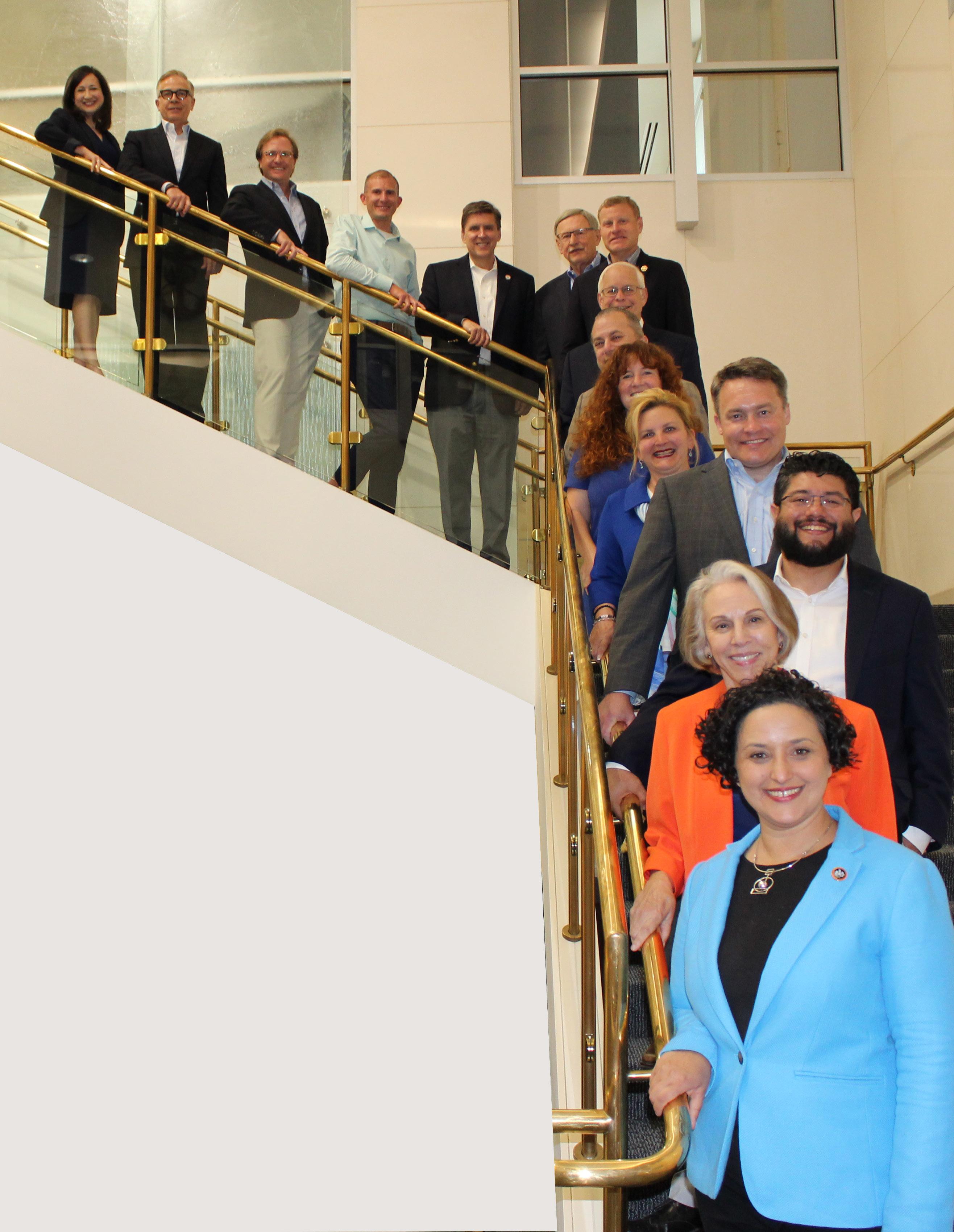















I’ve probably said in this space before that it feels like we’ve coming roaring back from the darkest days of the pandemic, but somehow that feels even more true in recent weeks. I’ve had the privilege to attend a remarkable number of events—ribbon cuttings, groundbreakings, panels and conferences—and to meet with many people one-on-one. Whether it’s over coffee or walking the halls of Capitol Hill to advocate for transit in Northern Virginia, these in person encounters matter. We know that many challenges lie ahead for public transit, especially on the Metro funding front, so I take every opportunity to share our knowledge and to press our cause.
I’m sure you’ve experienced it as well. We know that traffic volumes on our roads and highways are at or above pre-pandemic levels. That’s another reason public transit must remain a vital part of our transportation network, helping to move more people through our congested region. People are heeding the call. Metrorail saw more than 300,000 daily entries in the last month. That’s 37% higher than a year ago. Our other transit agencies are seeing similar results.
I want to extend a special thank you to Chair Dalia Palchik for making multiple appearances on behalf of the Commission and spreading our messages even further. Our staff have also been busy, attending regional meetings, speaking to classes and joining the celebrations for new transit services, many of which are highlighted in this month’s issue.
If our paths haven’t crossed recently, I hope they will soon, perhaps at our Legislative Forum in December.
Executive Director



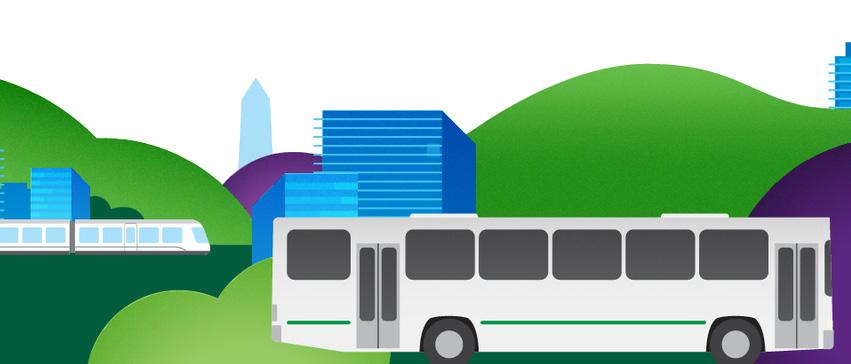






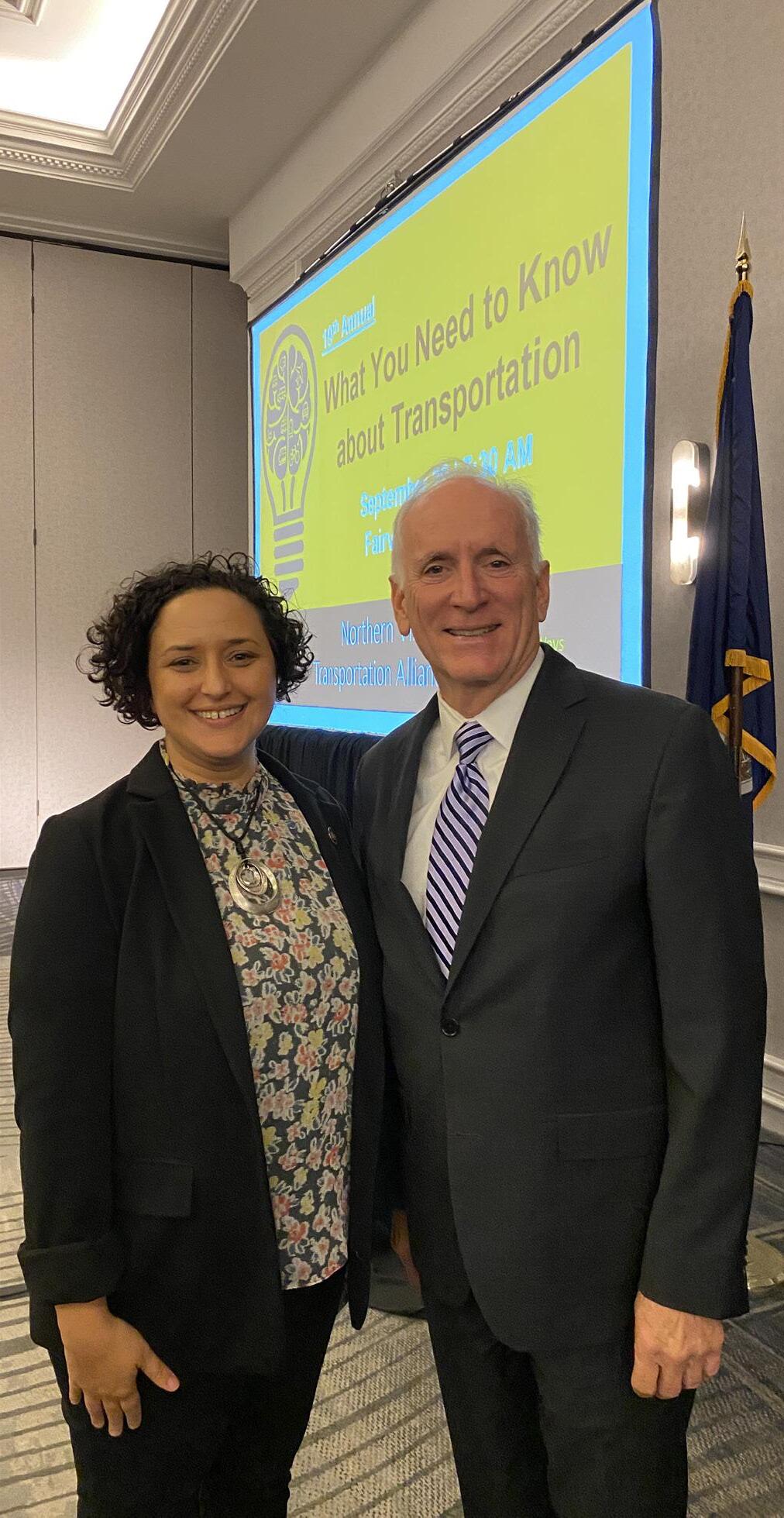
Chair Dalia Palchik joined a high-powered panel September 29 to give NVTC's perspective on "What You Need to Know About Transportation." Hosted by the Northern Virginia Transportation Alliance, the event in Falls Church featured a keynote by Maryland Transportation Secretary Paul Wiedefeld. Fairfax County Chair Jeff McKay, Metropolitan Washington Airports Authority President & CEO Jack Potter and Virginia Deputy Secretary of Transportation Michael Sargent rounded out the panel. Chair Palchik fielded questions about Metro funding and the subsidies paid for by our local governments.
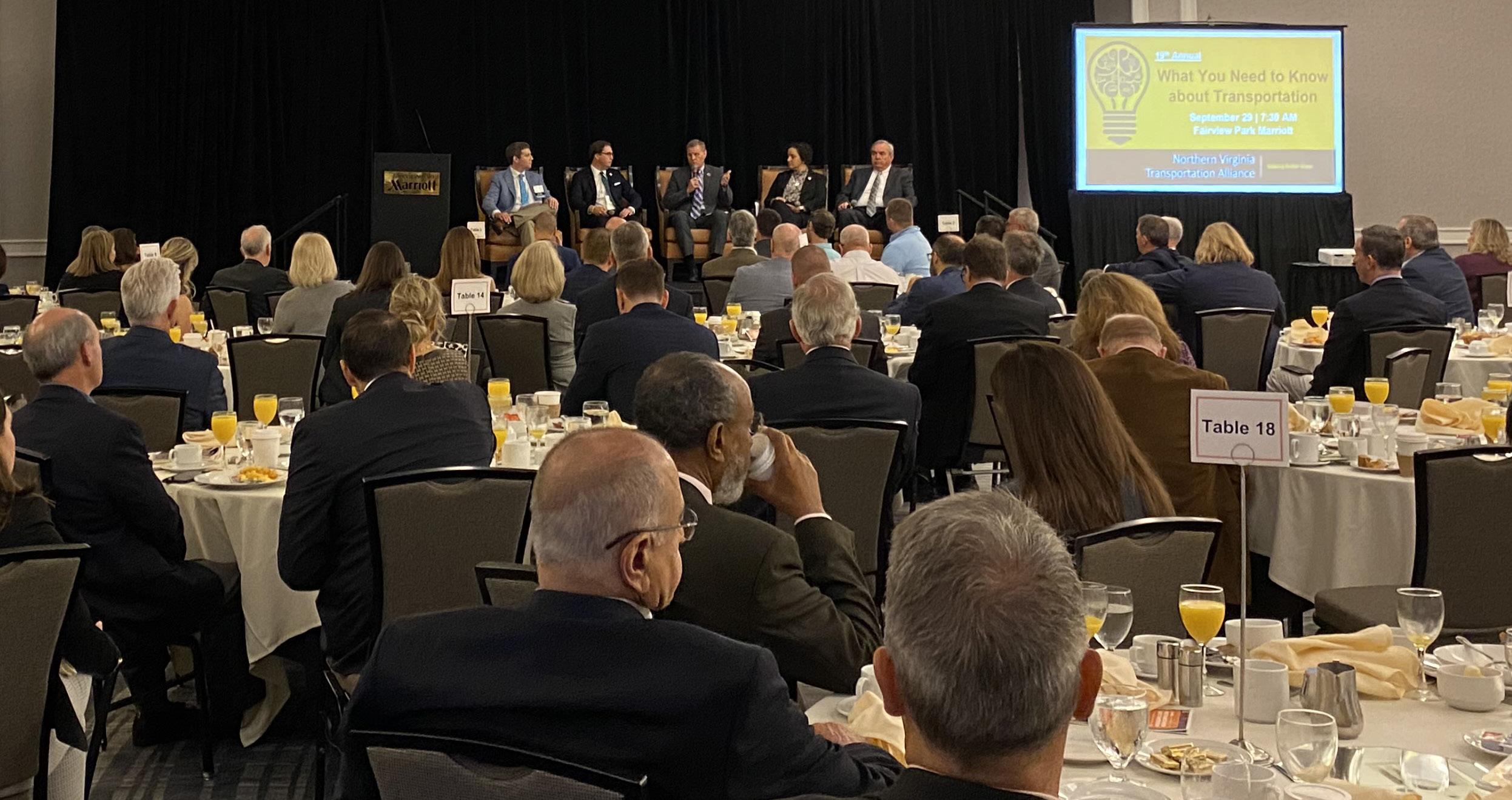
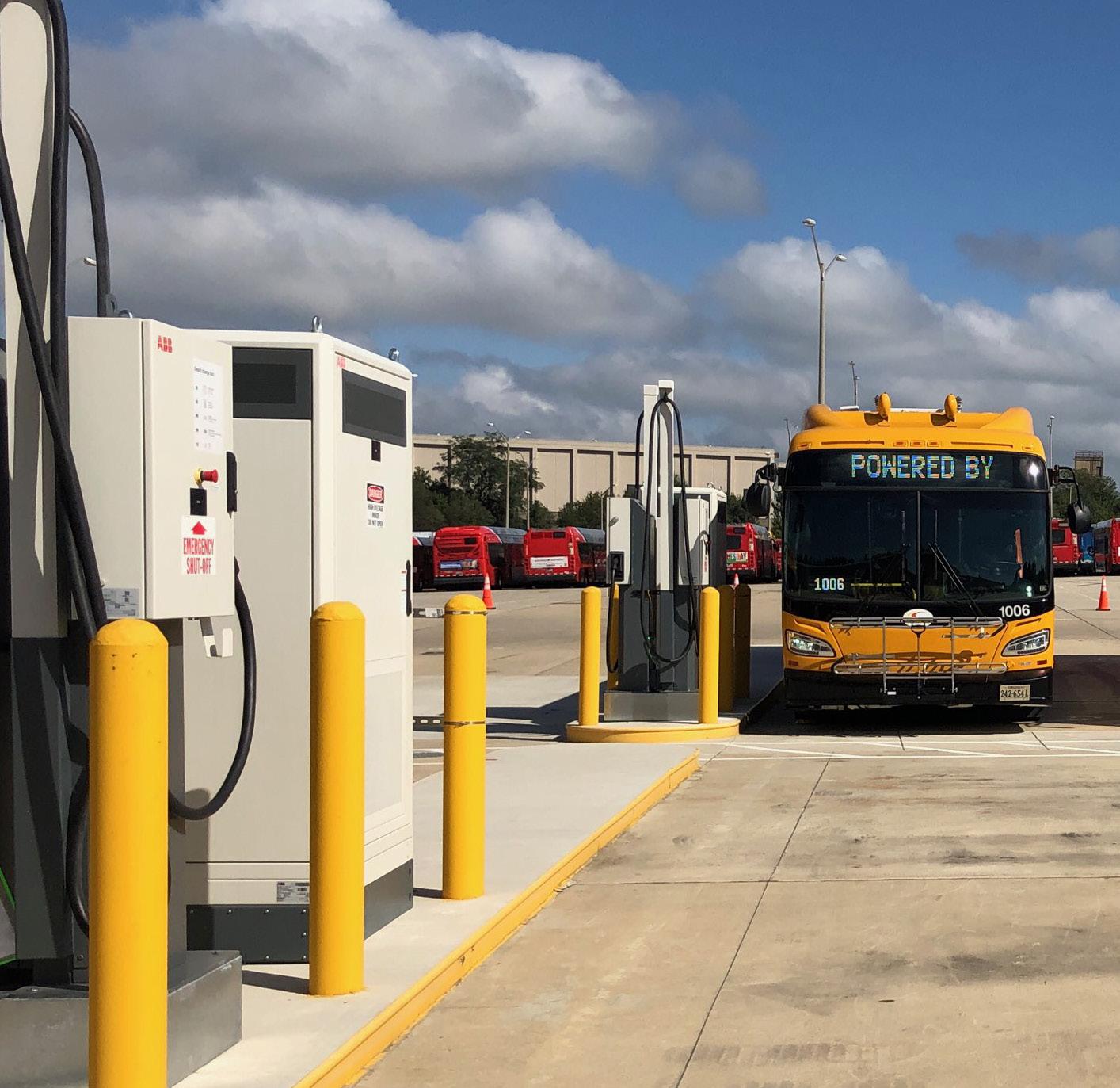
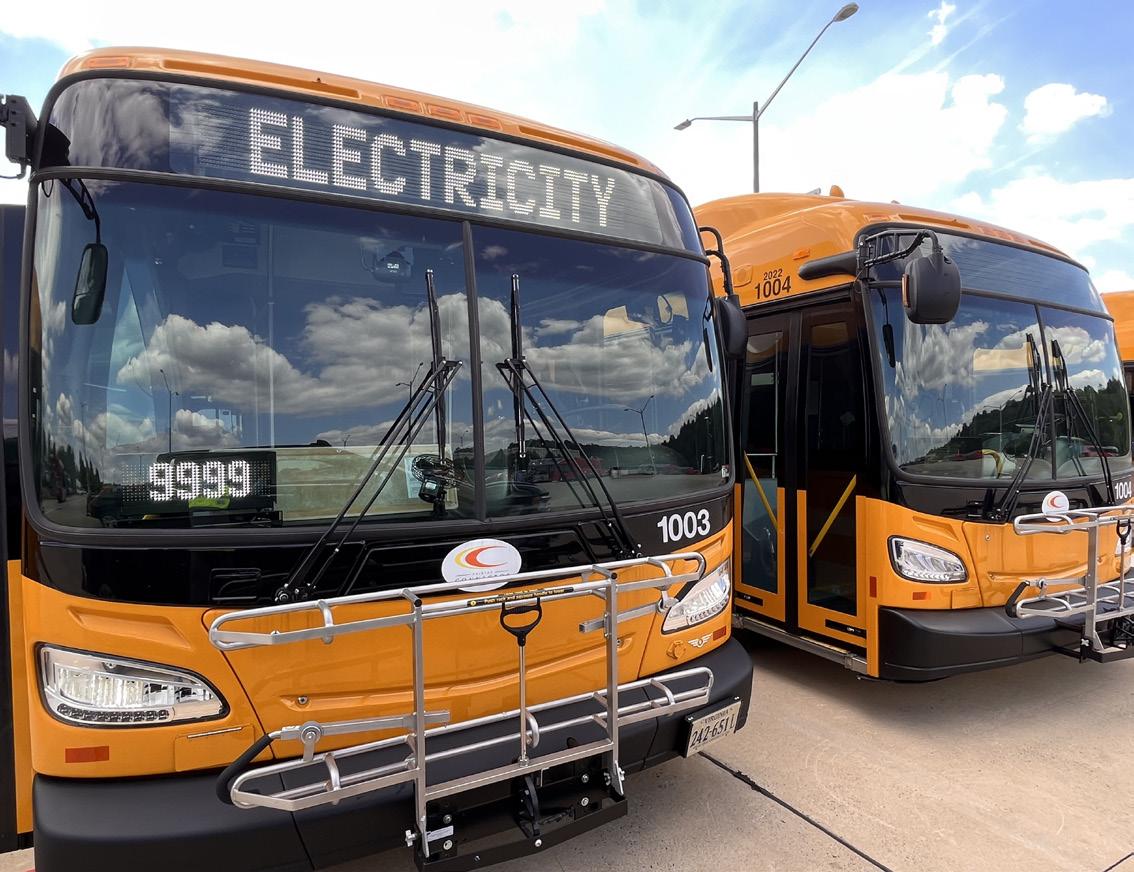
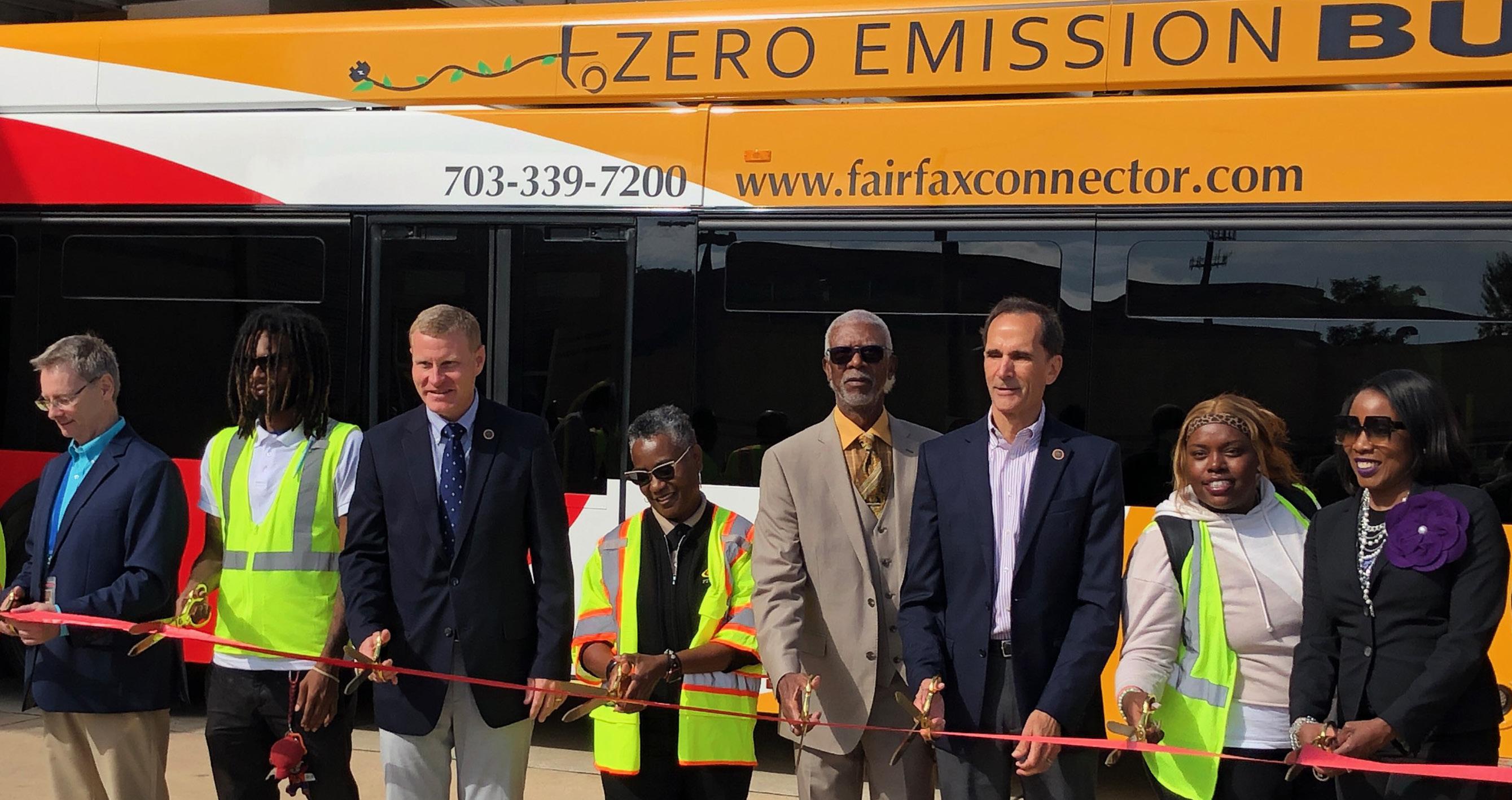
Transit Technology Senior Program Manager Ann McGrane joined folks from across the region as Fairfax County unveiled its first battery-electric buses (BEBs) September 28. Eight BEBs will join the Fairfax Connector fleet, enhancing public transportation and promoting sustainability in the county. The buses will operate as a pilot from the West Ox Bus Garage, where the county has installed four dual dispenser chargers. In addition to this pilot, Fairfax County is planning to use electric buses as part of "The One," the planned Bus Rapid Transit (BRT) system for Richmond Highway. The BRT line will benefit from Metro's electrification of the Cinder Bed Road facility, which was announced in June and will be shared with Fairfax Connector. The eight Fairfax Connector BEBs join DASH’s 14 electric buses currently in service. ART also recently announced it will purchase four battery electric buses. Meanwhile, Ann will present draft strategies from our "Regional Zero-Emission Bus Strategic Plan" to the Commission next week.

The Metro Board received an update from staff on the agency's FY 2025 fiscal and budget outlook September 28. Through aggressive cost saving measures to find operational efficiencies, Metro has reduced the fiscal year operating funding gap, which was estimated in June to be $750 million. As Metro has refined its budget assumptions, staff have provided the Board with three scenarios that close the gap even further, but these would rely on transferring eligible preventive maintenance expenses from the operating budget to the capital budget and paying for those expenses with eligible federal capital funds. Because of the support dedicated capital funding provides to the capital budget, Metro says it would still accomplish the same amount of preventive maintenance work in any scenario, but additional transfers have the consequence of advancing the exhaustion of dedicated capital funding bond capacity to FY 2028, a year earlier than originally forecast. The three scenarios reduce the operating gap to anywhere from $365 to $650 million. NVTC put out a statement on the financial update Tuesday, which also appeared in The Washington Post.
The tools available to the Metro Board include adjusting fare and service levels, which the Board will discuss in October; transferring eligible preventive maintenance funds from the operating to the capital budget; and cost savings found by management. In order to avoid devastating service cuts, legislative action would need to be taken by Virginia and Maryland to make a one-time adjustment of the FY 2025
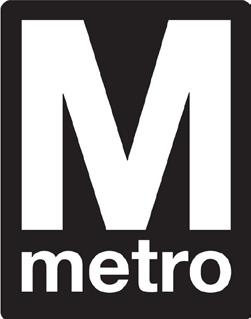
baseline subsidy. Metro’s budget process and Virginia and Maryland’s legislative calendars do not align and pose significant risks to staffing, hiring, training and service delivery.

"It's important to really get out there and talk to people and educate the elected leaders at the local, state and federal levels to really have them understand the issue, the urgency of the issue and potentially be prepared to take action early enough, or maybe get things presenting in the draft budget prior to the start of these legislative sessions," said Board Chair Paul Smedberg in a news conference following the Board meeting.
We expect Metro GM/CEO Randy Clarke to provide a proposed budget in December. NVTC staff will engage with Commissioners, Virginia's Metro Board members, and the NVTC WMATA Committee to provide input during the budget process.




"We're really just talking about FY 2025. This is really a two-step process. What you saw us talking about today is FY 25, but that isn't going to solve our ultimate problem," said Finance and Capital Committee Chair Matt Letourneau.

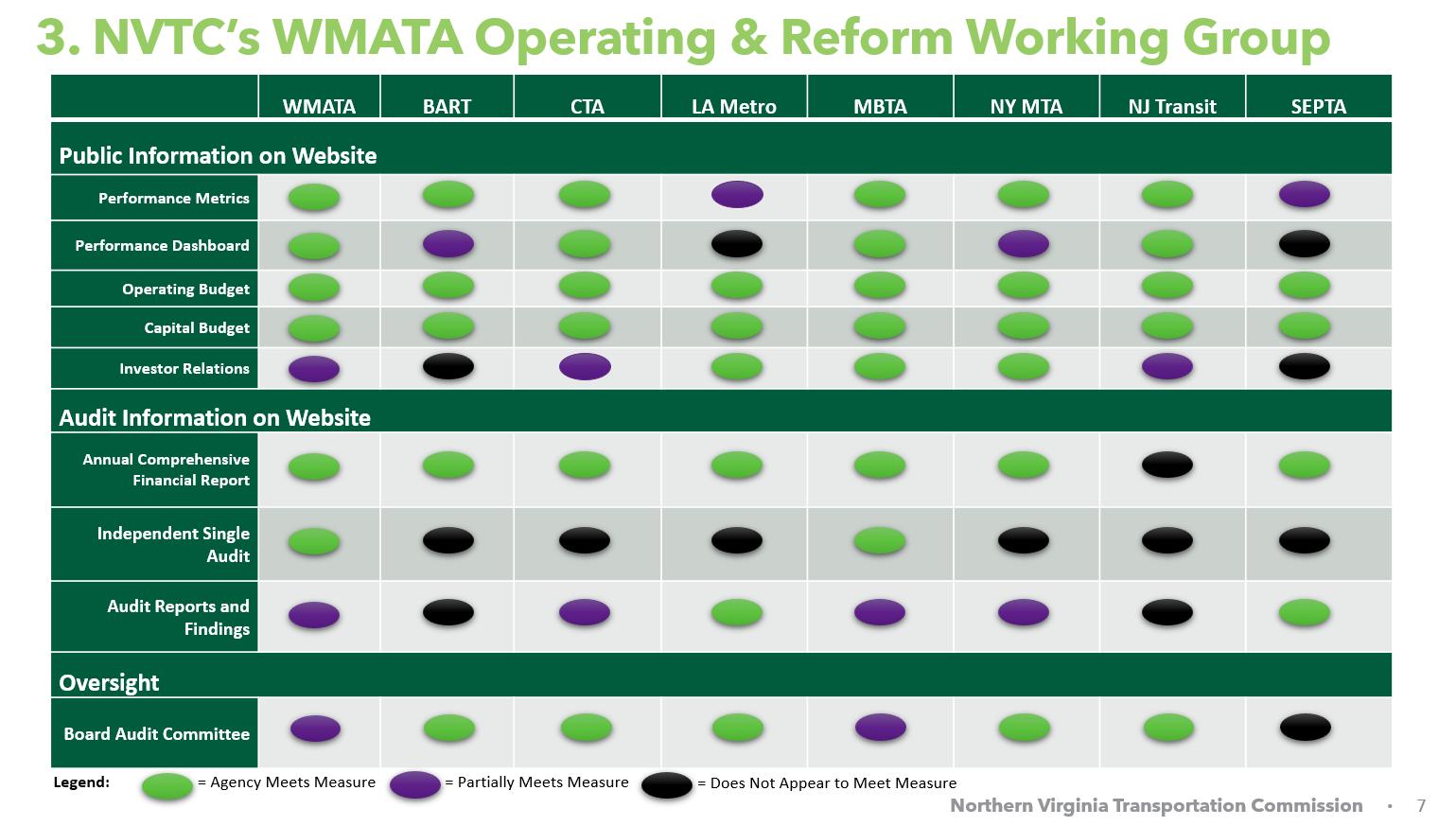


Our WMATA Committee met September 21 to hear an update on NVTC’s Metro Operating Funding and Reform Working Group, which is a staff-level working group tasked with examining the structural funding challenges at Metro, identifying opportunities for better transparency and oversight of Metro and identifying potential funding sources for future consideration in Virginia as the region tackles the agency's longstanding need for dedicated operating funding. The findings from the working group will be developed into a technical report and inform the recommendations in the 2023 "Report on the Performance and Condition of WMATA." The findings and recommendations have been structured into five categories:
• Structural Growth Cost
• Operational and Financial Accountability
• Oversight
• Structural Funding Deficit

• Capital and Other
The Commission will be briefed on the annual report in November and we will seek approval to send the report to the governor and General Assembly in December.
NVTC staff also updated the committee on recent Metrobus service and subsidy trends. As Metrobus services have shifted in response to post-pandemic travel trends, the distribution of Metrobus service between Virginia, Maryland and the District of Columbia has shifted significantly, while the way Metrobus subsidies are split between these jurisdictions has not. NVTC staff will continue to explore and understand these trends and integrate their findings into current and future NVTC or Metro studies that relate Metrobus service and how it is paid for.
Executive Director Kate Mattice joined Rep. Gerry Connolly, Fairfax County Chair Jeff McKay, Metro GM/CEO Randy Clarke, Metro Board Chair & NVTC Commissioner Paul Smedberg and others in celebrating a $104 million dollar grant from the Federal Transit Administration to help Fairfax County Government transition to electric buses August 30.
The grant, the largest FTA bus grant awarded this year, will support the electrification of Metro's Cinder Bed facility in Lorton and the procurement of approximately 100 battery-electric buses. The facility will also serve future Fairfax Connector electric buses that will run along Fairfax County's

Richmond Highway Bus Rapid Transit (BRT) system, known as "The One". NVTC is happy to support The One BRT with our recent Commuter Choice award of $10 million toward the project and we anticipate awarding an additional $10 million during the next round of funding for the I-95/395 corridor.
Photo: Immediate Past Chair Canek Aguirre, ATU Local 669 President Raymond Jackson, Fairfax County Chair Jeff McKay, Metro GM/CEO Randy Clarke, FTA Deputy Administrator Veronica Vanderpool, Rep. Gerry Connolly, Metro Board Chair & NVTC Commissioner Paul Smedberg, Kate Mattice (left-right)

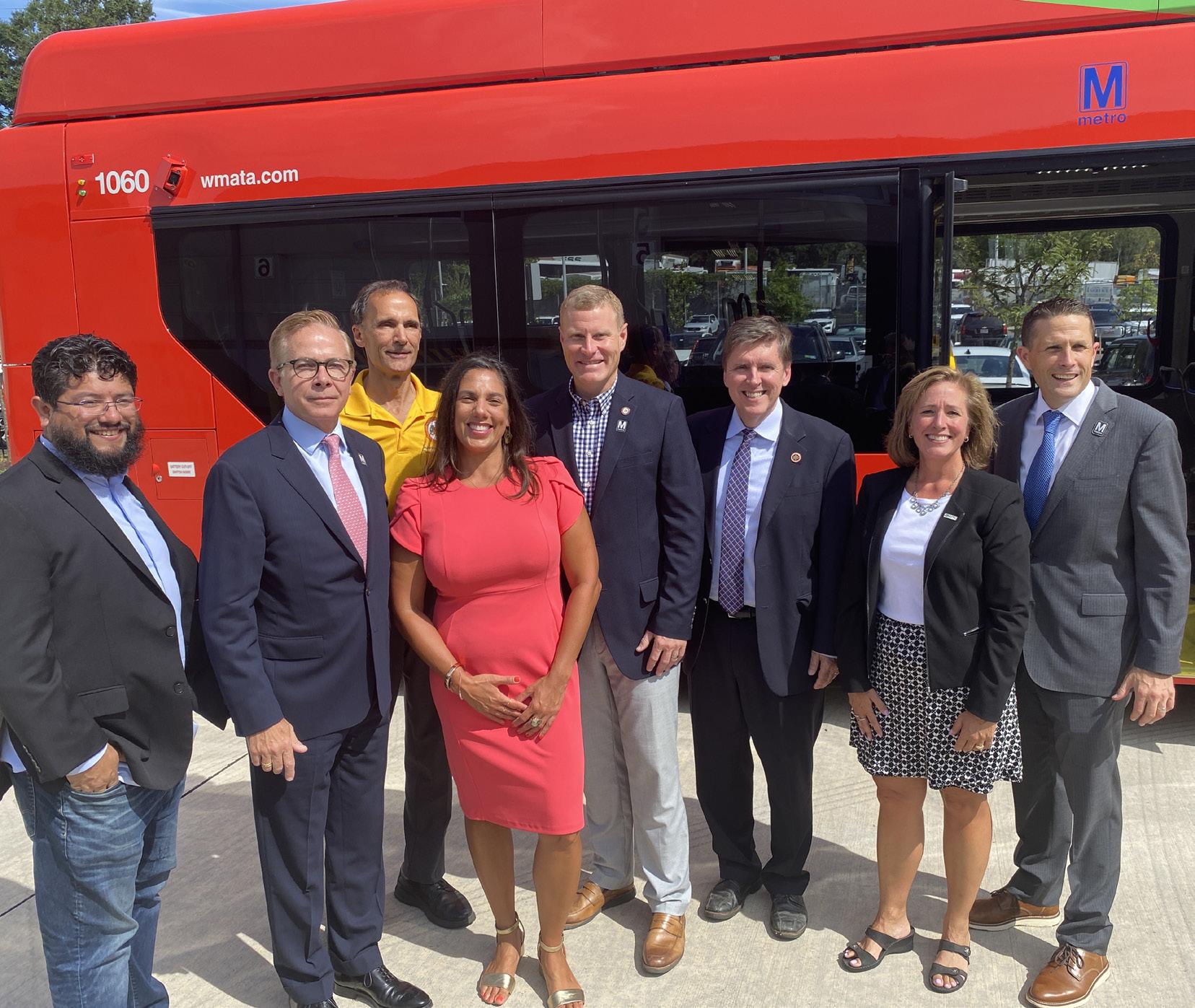
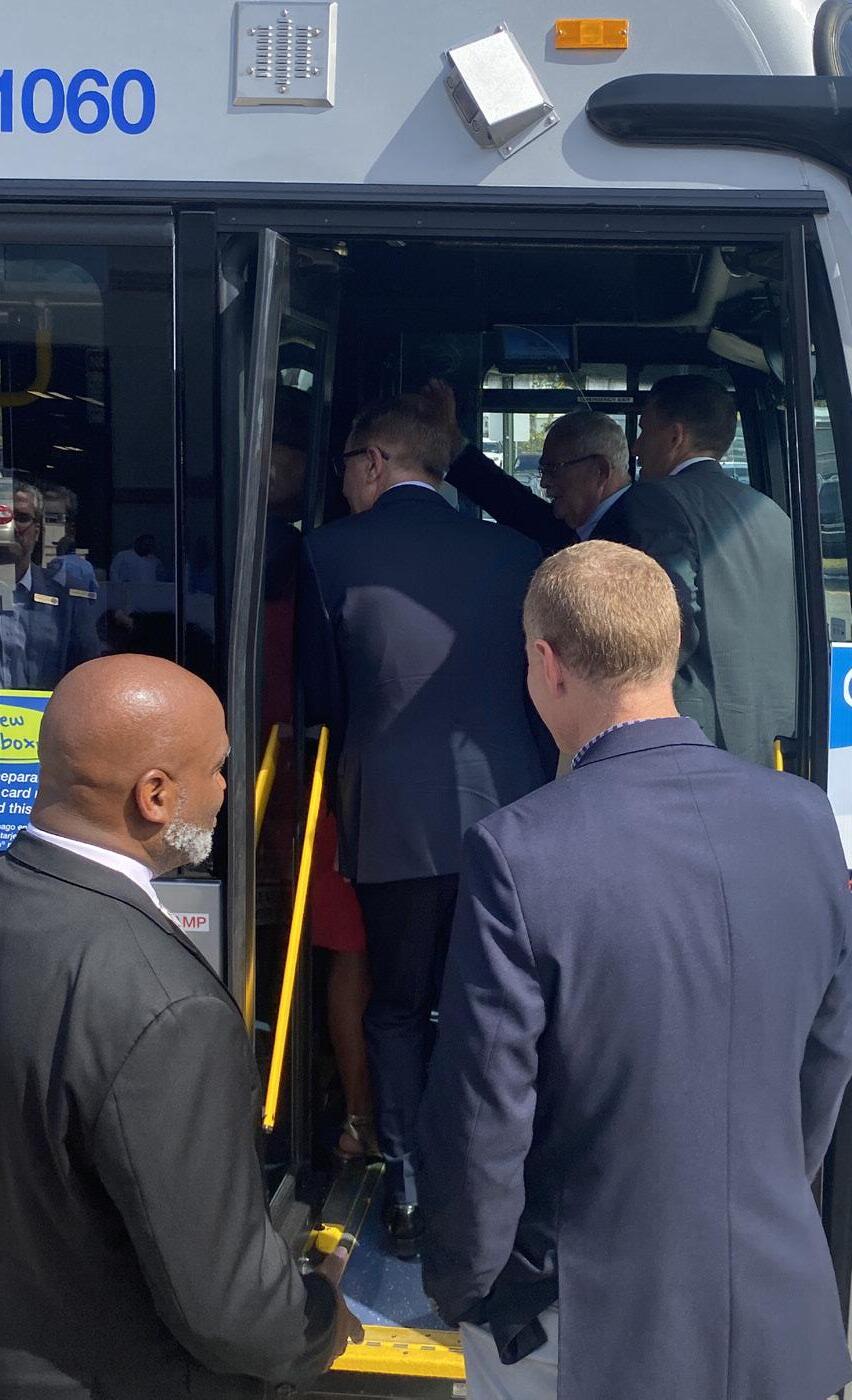
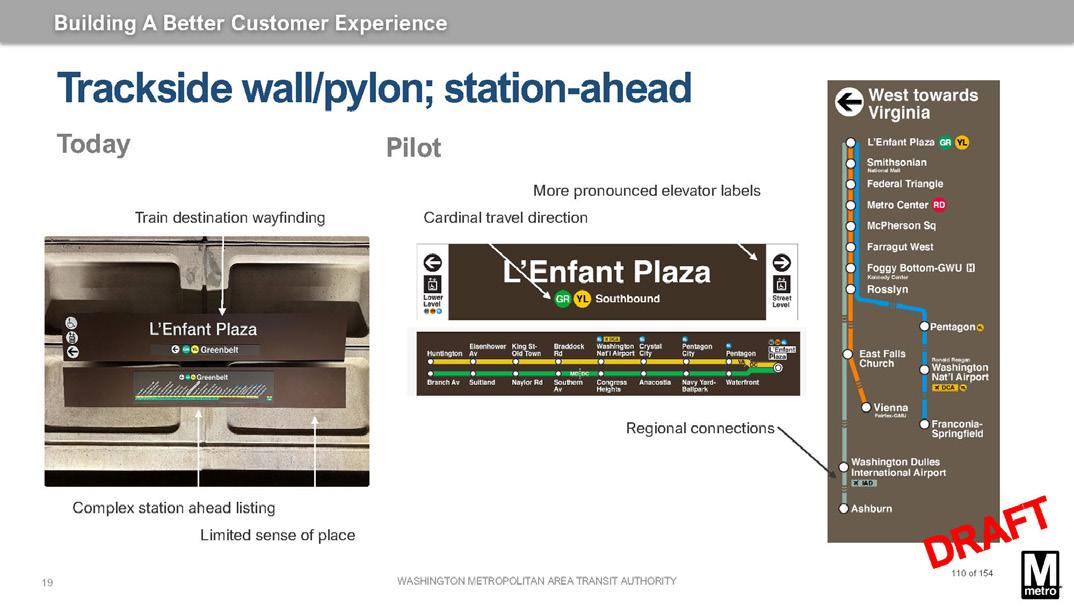
Metro staff briefed the Board on upcoming potential changes to Metrorail station signage and maps at their meeting September 14. Metro's new Chief Experience Officer Sarah Meyer outlined the ideas that include adding cardinal directions like north and south, and giving station exits new labels to make finding destinations easier. Staff also showed off new concepts like neighborhood/landmark maps that show clearer connections to Virginia Railway Express, regional buses and other transportation modes. The wayfinding pilot kicked off in September at L'Enfant Plaza, with additional rollouts planned through the fall and winter months. Bus riders will see more screens with real-time arrival data at bus stops. The new MetroPulse app will gain new functionality this fall and into next year.

Metro Center and Gallery Place will close from December 18 to 30, with Judiciary Square closed from December 22 to 24. Metro says the closure will allow critical safety repairs to the tunnel and track infrastructure, upgraded signal and communications systems and installation of new platform edge lights.
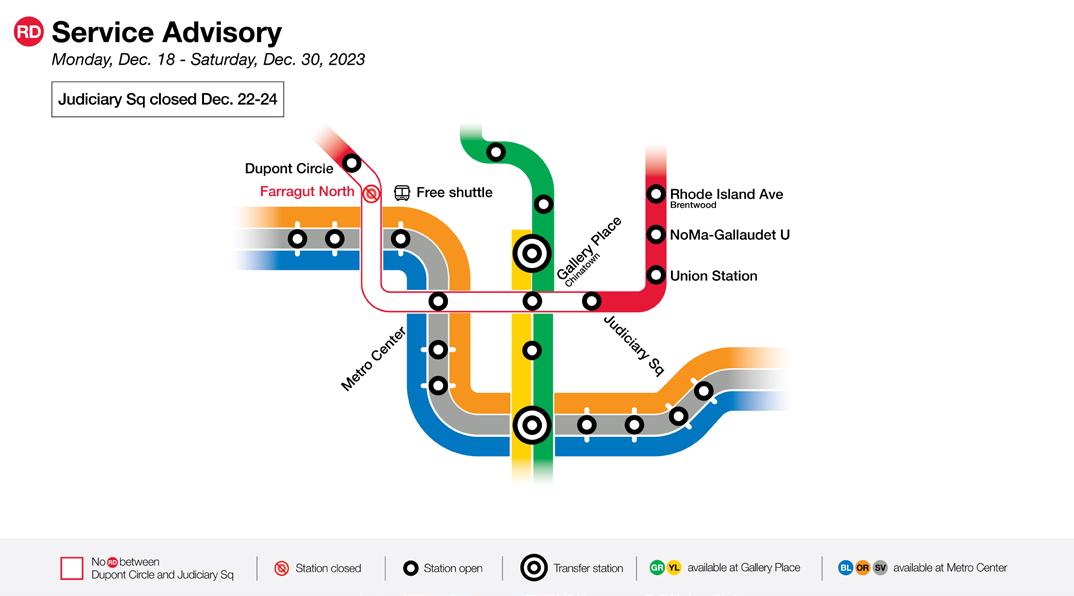
Metro says it also plans to introduce fare payment changes, including acceptance of contactless credit cards at faregates and fareboxes, fare-capping and the next generation of account management. It will also add reardoor boarding to Metrobuses this year. These measures have been priorities for NVTC and the region.

Metro also announced upcoming state of good repair work that will shut down several Red Line stations in December. Farragut North,
Finally, Metro conducted a survey in September to ask riders about potential ways to rename bus routes to make them easier to understand. The options Metro is exploring include naming frequent service routes after streets or by geography to designate Virginia, Maryland or district routes. Metro's Better Bus team is also looking at ways to standardize and improve bus stops and making connections to other transit providers simpler to understand.
 Photos Courtesy of Metro
Photos Courtesy of Metro
The Commonwealth Transportation Board (CTB) approved new policies September 20 that change the way the Virginia Railway Express (VRE) is funded and reform the governance and funding of Metro.


The Department of Rail and Public Transportation (DRPT) says these policies are a result of legislation passed by the General Assembly in 2023 with a goal of ensuring state funds are allocated effectively and bring more accountability to the performance of both systems. VRE will now be allocated funding based on metrics that are specific to the commuter rail system’s needs. State oversight of Metro will increase, and the amount the Commonwealth can provide them in operating and capital assistance is capped.
Director DeBruhl provided details on the changes enacted by the General Assembly this year including updated requirements for local
jurisdictional subsidies for Metro, and new strategic plan requirements to look at routes, operating efficiency, overlapping service and unserved areas.
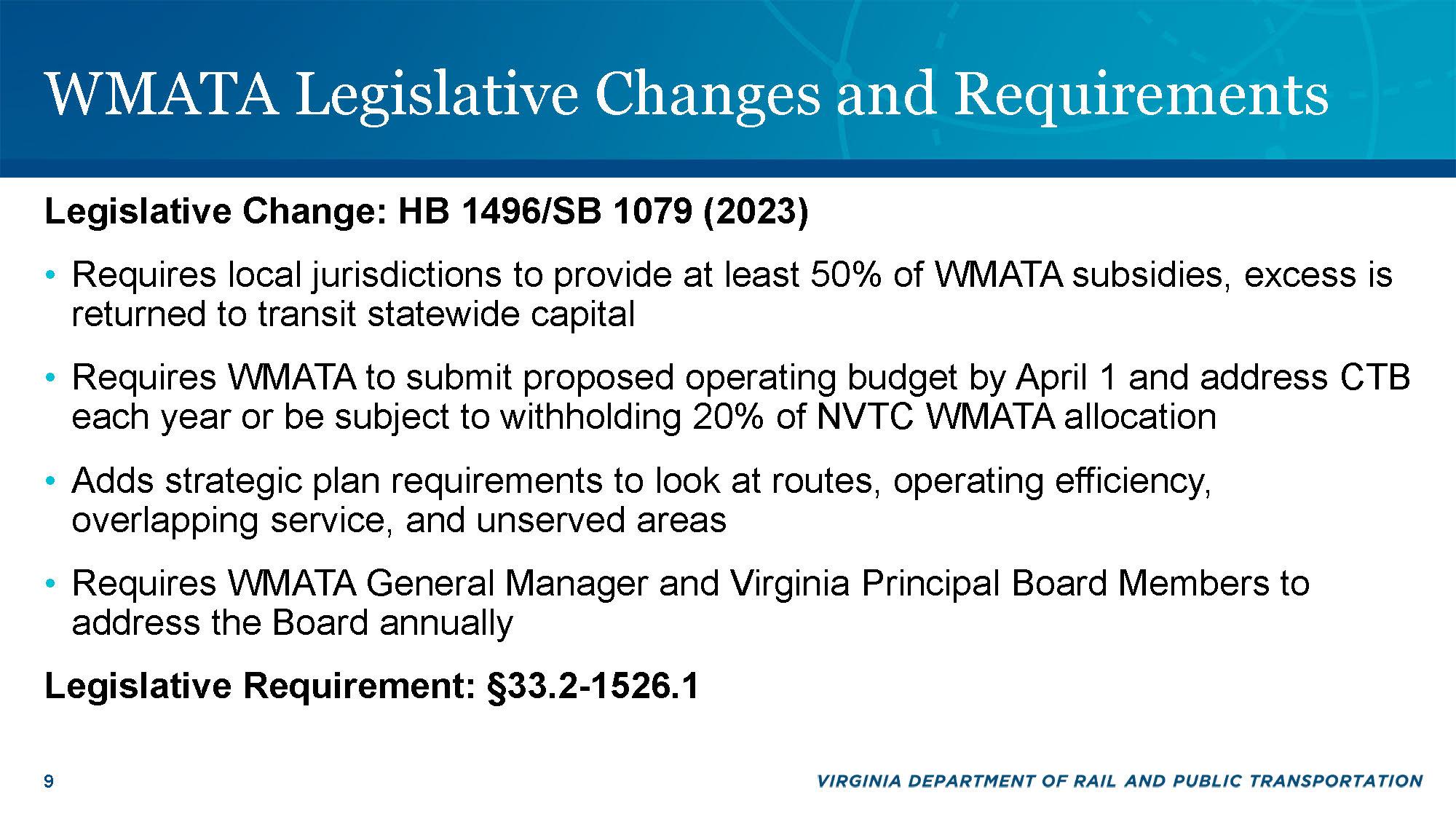
Director DeBruhl also noted that Metro is in compliance with applicable law and CTB policy on several key measures.
Finally, she provided a five-year lookback on dedicated capital funding for Metro, investing $2.7 billion toward reducing the state of good repair backlog. Money that has gone to rebuild Metro stations through the Platform Improvement Project, rehab of the Yellow Line Bridge/Tunnel and other work. A 2018 agreement between Virginia, Maryland and the District of Columbia provides $500 million annually toward critical safety and state of good repair projects.
NVTC’s Legislative and Policy Committee met August 31 to discuss important state and federal legislative priorities and begin crafting 2024 policies and strategies. Our Legislative Liaison Aimee Perron Seibert updated the committee on General Assembly activities, noting that the 2024 session will be unusual given the amount of changeover anticipated following redistricting and retirements.
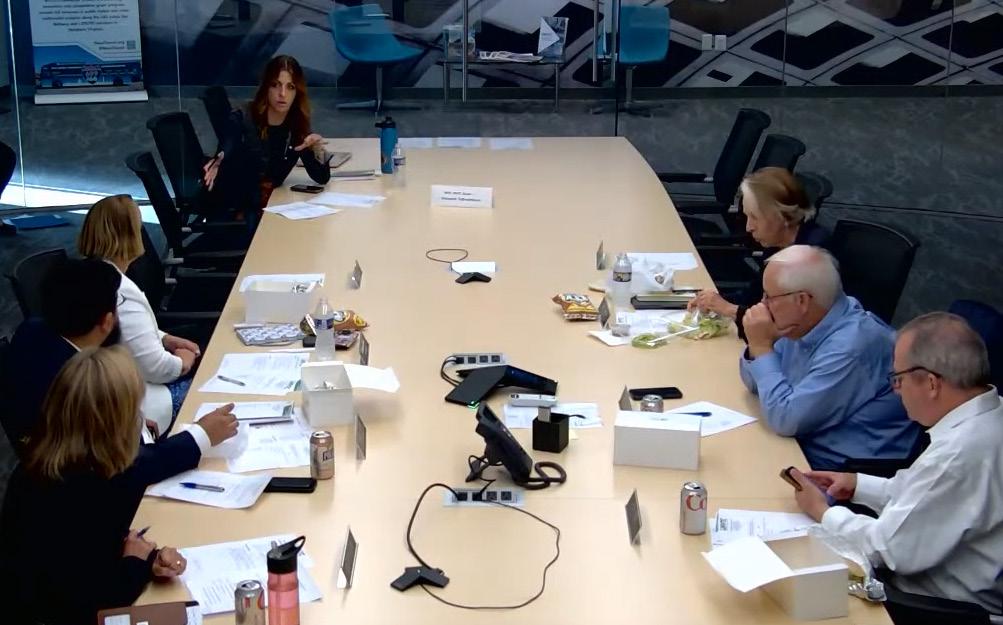
There could be as many as 55 new members serving in Richmond come January. Focusing on
outreach, education and relationship building with incoming and senior senators and delegates will continue to be important as we head into next year's session.
The Committee also discussed NVTC’s 2024 Legislative and Policy Agenda which will be presented at the November Commission meeting. This document governs the state and federal issues that NVTC can actively support at the Virginia General Assembly as well as the U.S. Congress.





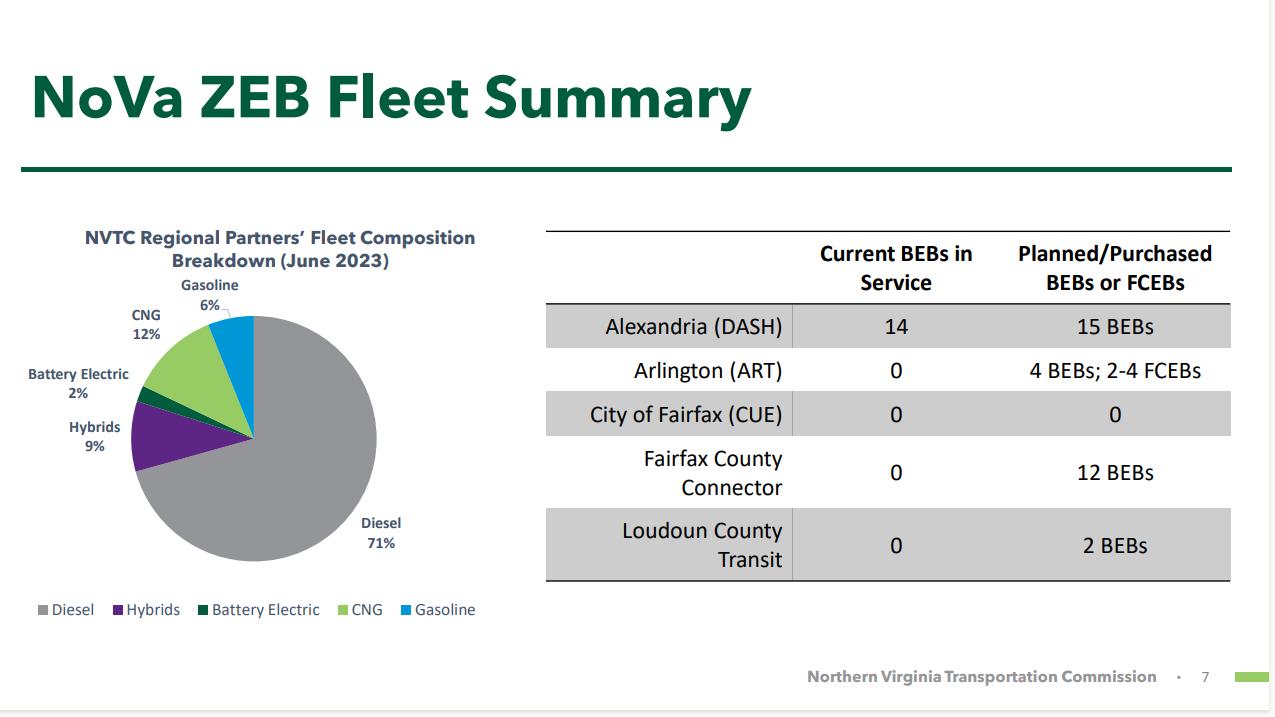

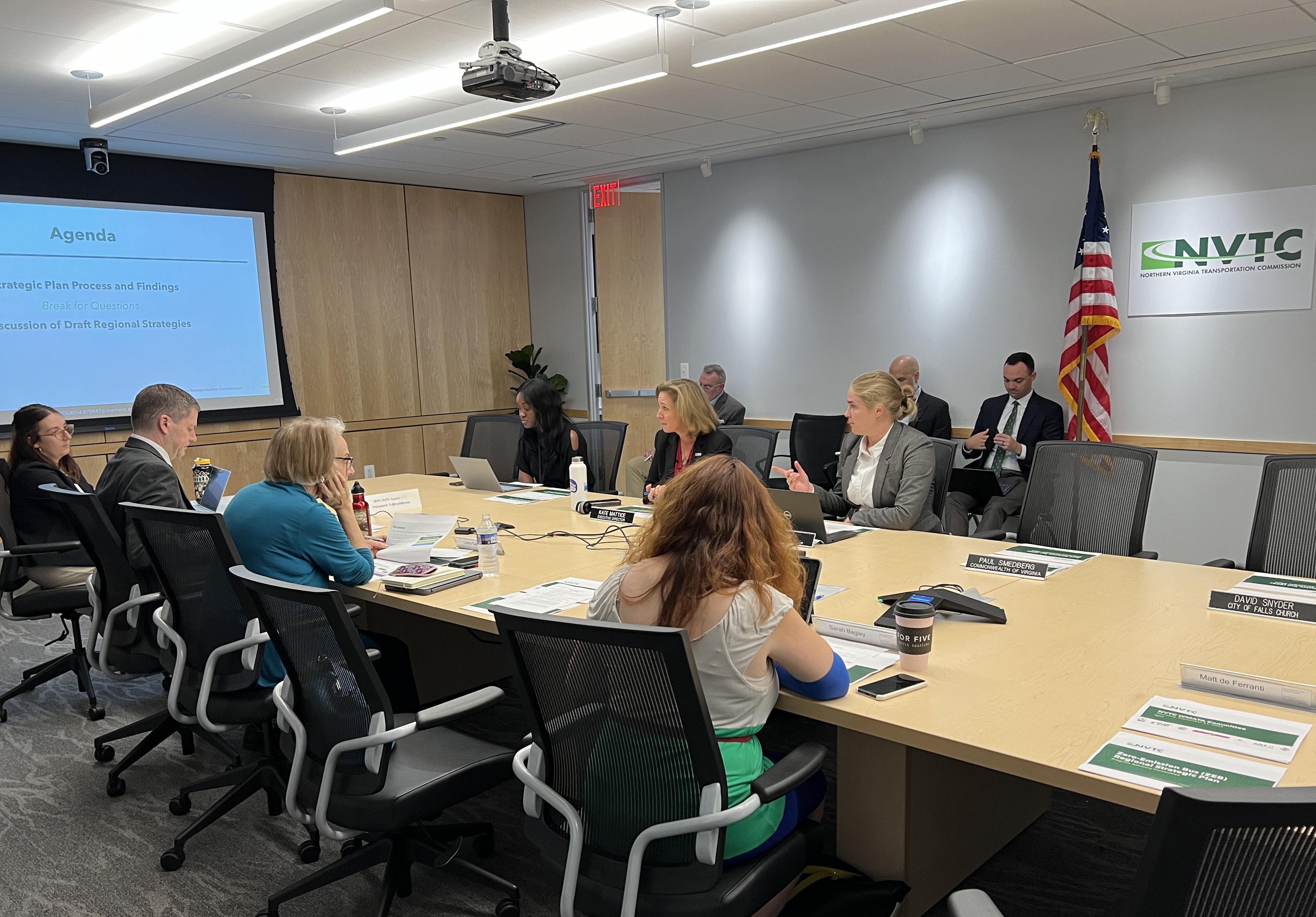

NVTC’s zero-emission bus (ZEB) team updated the Program Advisory Committee on the status of the NVTC Regional ZEB Strategic Plan during its September 21 meeting. Senior Program Analyst Ronnetta Zack-Williams provided a status update on the increase in ZEBs both nationally and locally, while Senior Program Manager Ann McGrane discussed NVTC’s draft regional strategies and actions to support ZEBs across Northern Virginia. These draft strategies are the culmination of six months of discussion and analysis among NVTC, its consultants and its regional partners.

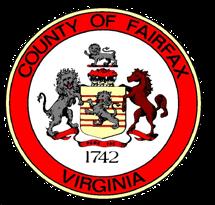
We wrapped up our fourth regional marketing campaign promoting the use of public transit in Northern Virginia in September. We are in the process of tracking ridership data during the campaign cycle and will have more insights to share at the October Commission meeting. The eight-week “Ride With Us” campaign kicked off June 1 in support of the opening of the Potomac Yard-VT station and the reopening of the Yellow Line Bridge/Tunnel. New this year, we dramatically expanded the number of radio stations we advertised with from two to a dozen, which expanded and diversified our audience with greater visibility in minority and Spanish speaking communities. The campaign was
heard on over a dozen radio stations, podcasts and streaming services and seen across multiple digital and social media platforms. As of midAugust, the campaign delivered over 11 million impressions, which translated to over 20,000 clicks to the NoVaRides.org English and Spanish landing pages.
We’d like to thank the Department of Rail and Public Transportation and our regional partners, Arlington, Alexandria, Fairfax, OmniRide and Virginia Railway Express, for funding this year's campaign. If you haven't already hopped onboard to "Ride With Us," visit NoVaRides.org and plan your trip today!


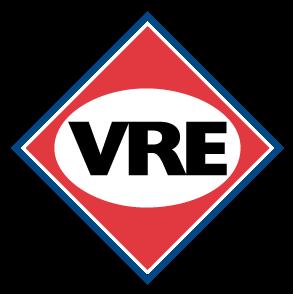
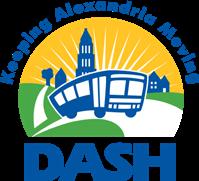
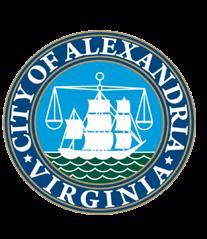
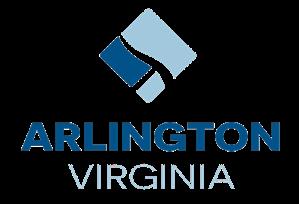




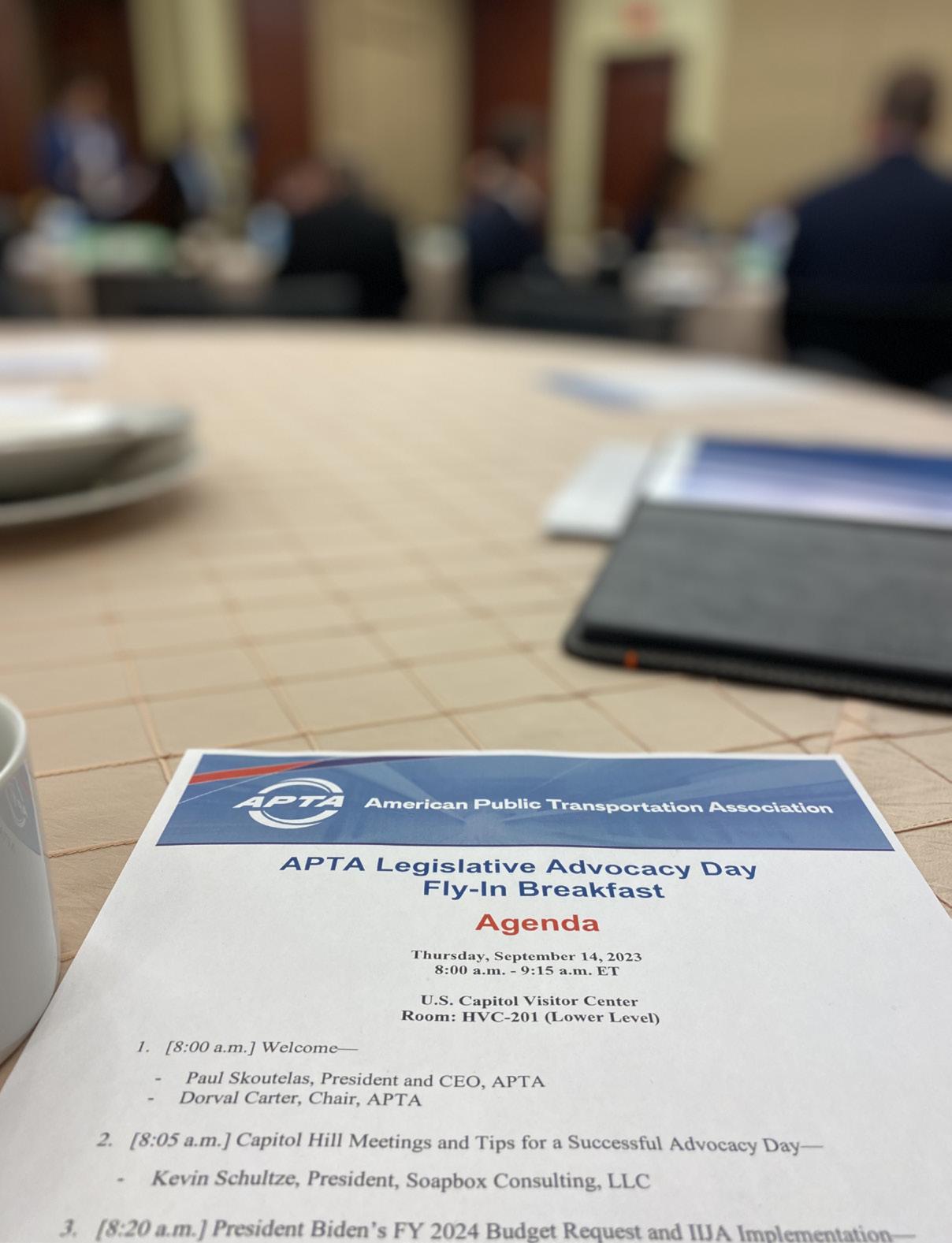
Executive Director Kate Mattice took advantage of the Capitol Hill visits by fellow transit professionals from across the country to meet with our own NVTC-district delegation on the need for continued support for transit investments and to update them on NVTC efforts, including the Route 7 Bus Rapid Transit and our focus on the fiscal health of Metro. While Kate regularly speak to as many folks as possible about the critical importance of transit to our region, the American Public Transportation Association (APTA) also encouraged members to come to the capital the week of September 11 to make their voices heard. The meetings came as Congress got ready to debate annual spending bills.
 Photo: Kate with Rep. Jennifer Wexton, who served on the Commission from 2014-2018
Photo: Kate with Rep. Jennifer Wexton, who served on the Commission from 2014-2018
Executive Director Kate Mattice had the privilege to speak to students earning their master's degrees in urban & regional planning at Georgetown University September 28 at the invitation of former Commissioner Chris
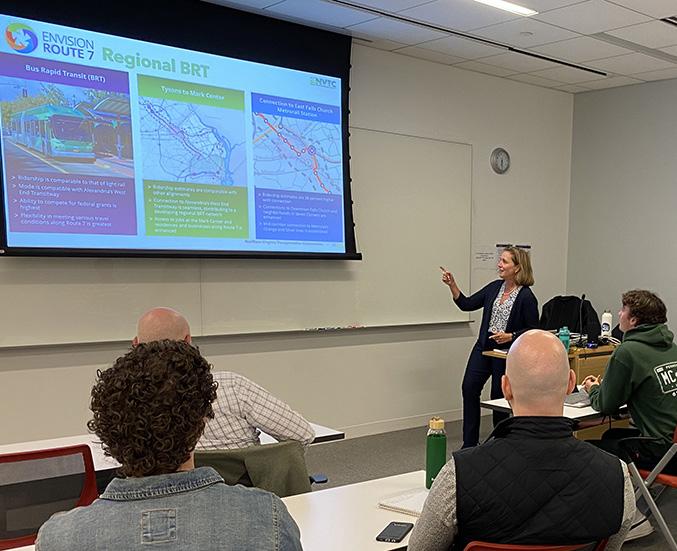
Zimmerman, who teaches a graduate seminar. I also told the students about our Transit Fellow program, which provides learning opportunities for the next generation of transportation professionals.






We are excited to announce that NVTC Senior Grants and Procurement Manager and DBE Liaison Officer Brittany Sumpter has been selected to join the first class of the Virginia Transit Leadership Institute (VTLI), a program of the Virginia Transit Association. VTA calls it "a groundbreaking program aimed at fostering the next generation of public transportation leaders in Virginia." It's designed to engage, elevate and cultivate emerging leaders in the public transportation sector.

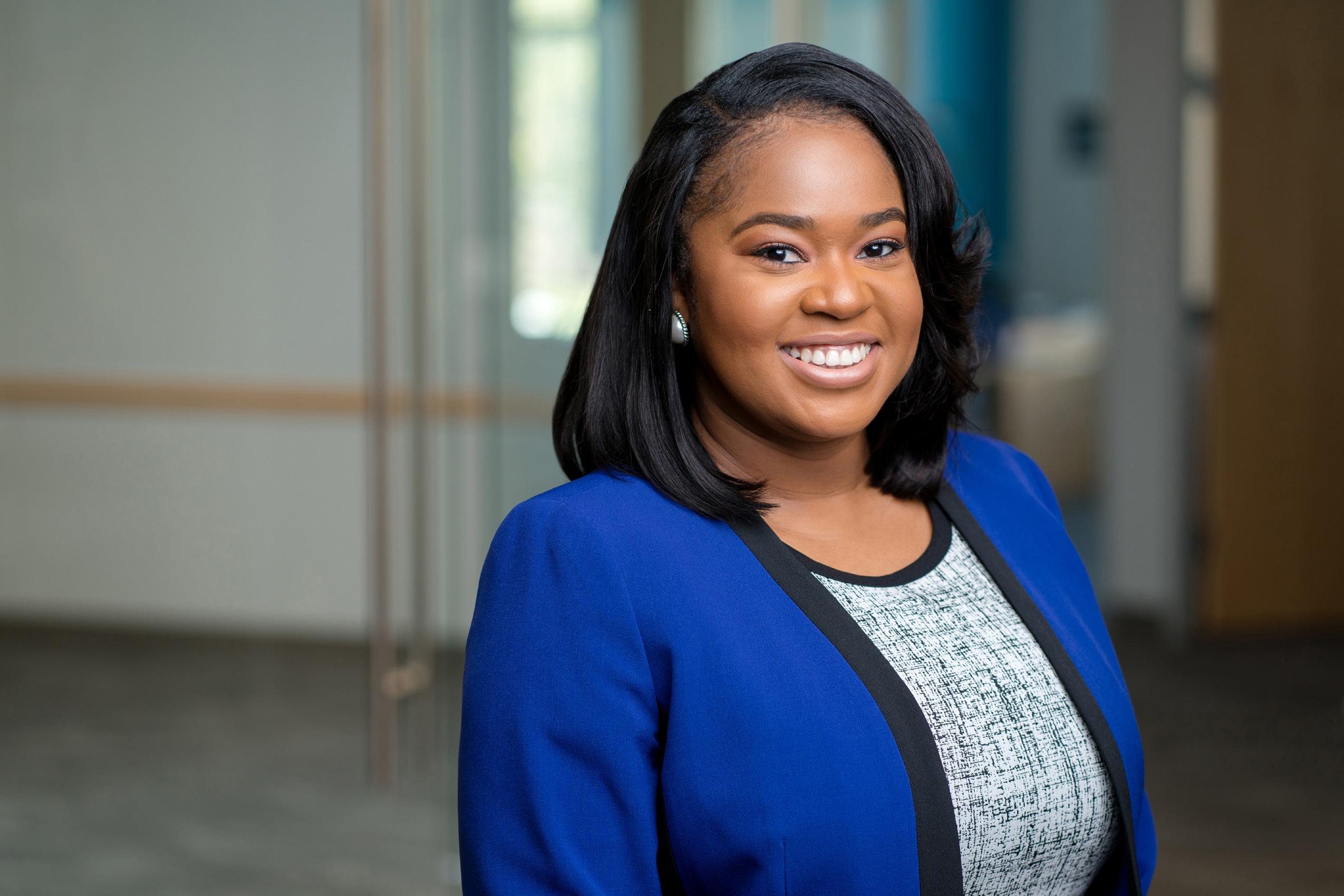
Brittany is a dynamo who not only manages our federal grants but oversees our contract procurement and leads our Disadvantaged Business Enterprise (DBE) efforts. We are happy to see that she will be a part of this leadership cohort and hope to provide this professional growth opportunity to more staff in the future.


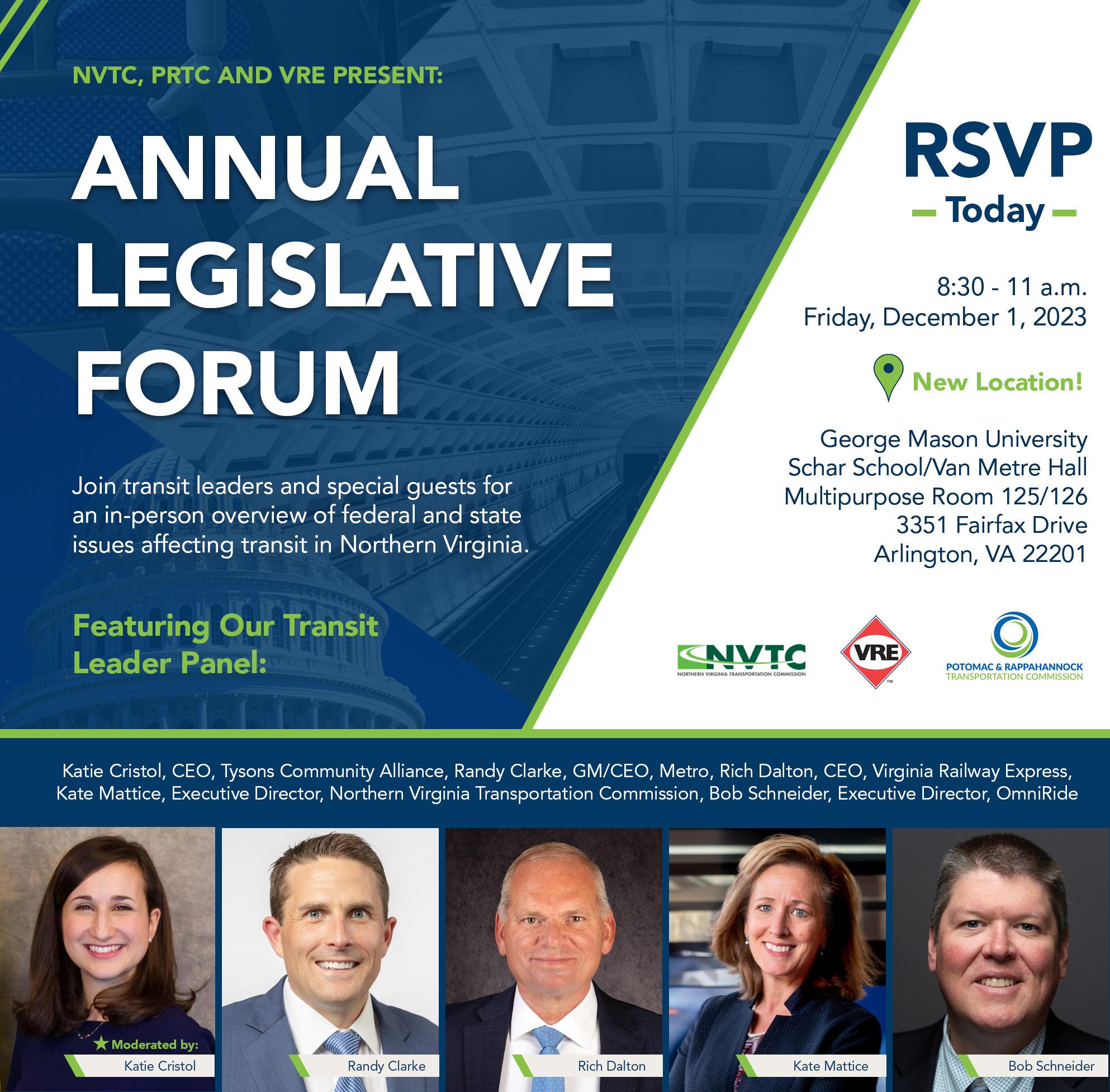

Courtesy: Metro
Chair Dalia Palchik, Libby Garvey, Immediate Past Chair Canek Aguirre, Vice Chair, Matt de Ferranti, Aimee Gilroy, Sarah Bagley, Adam Ebbin, Secretary-Treasurer David Snyder, Jeffrey McKay, John Foust, Walter Alcorn, M. David Skiles, John C. Tuck III, Paul Smedberg, Katie Cristol, (not pictured) James R. Walkinshaw, Michael R. Turner, Daniel Storck, Jon R. Stehle, Jr., Catherine S. Read, R. Kirk McPike, Matthew Letourneau, Takis Karantonis, Phil Duncan, Nick Clemente, John J. Bell, Jennifer DeBruhl (F-B)


